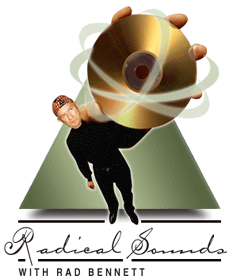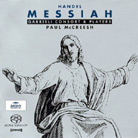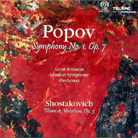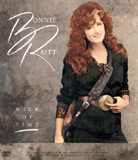 |
|||
| December 1, 2004 Mercury Living Presence Goes Triple-Threat SACD
Mercury’s producers and engineers used a system that relied on three microphones, suspended to capture the proper balance between the front stage and hall resonances. Once the microphones were set up and levels were taken, the balances were left up to the performers. The result was a series of three-channel master tapes and film masters that are generally considered among the finest of the era in which they were made. As with the RCA Living Stereo recordings discussed last month, SACD multichannel technology allows the public to hear these recordings in three-channel format for the first time. On these new hybrid multichannel discs, the three channels are all up front: left, center, and right. There are also a new DSD two-channel mix and the original two-channel "Red Book" mix, made for those early-1990s CD releases.
With one big reservation, the first ten SACDs sound marvelous (see sidebar for a complete list of the first release). The center channel adds a solid feel to the perception of front stage, and frees up the left and right channels a bit. The result is an abundance of detail not easily heard in the earlier two-channel mixes. The two best are the Bach Cello Suites and the Stravinsky Firebird. The Bach really gives credence to the "Presence" in Mercury Living Presence. From those lovely arpeggiated figures that begin the first disc, one feels that cellist János Starker is right in the listening room. In the Firebird, solid bass is revealed that could not have been cut into the vinyl discs of the time, as well as myriad delicate instrumental details that couldn’t be heard without the center channel. This SACD makes me long to hear a three-channel version of conductor Antal Dorati’s legendary Mercury recording of Prokofiev’s Scythian Suite. I hope that title is scheduled for the second wave of releases. My single reservation? Even in the 1950s, I found Mercury recordings shrill on top -- the violins could cut like a knife. These SACDs are the same. It is not so noticeable on the Stravinsky, Bach, Respighi, Hanson, Sousa, or Chabrier, but I find it objectionable on the Rimsky-Korsakov and Rachmaninoff. This may be something of a matter of taste, but I’m sure that real violins just don’t sound like that. These not only have "presence," they have too much edge. Whether these SACDs’ incredibly solid instrumental placement, well-focused bass, and singularly clean midrange will compensate for this fault will be up to each listener. You can’t go wrong with the first six listed above; for the rest, you might want to listen before you buy. The SACDs are lovingly presented, with facsimiles of the original covers as well as the original program notes. There’s also fastidious annotation of the original recording dates, producers, engineers, and venues, and complete credits for the entire reissue series. A happy holiday to all readers. Here are three more terrific recordings to give yourself or a special audiophile person:
Now that we know more about baroque music, there are two basic ways to perform this most popular of oratorios: with small forces and period instruments, or with a large chorus and orchestra, possibly using the arrangement by Mozart or Prout. This recording strikes me as the best of the former type. Paul McCreesh conducts a chorus of 24 singers and an orchestra of at most 39, the full number used only in the closing choruses of Parts II and III. Smaller forces comprising virtuoso singers and players allow McCreesh to take brisk yet never frantic tempos, and to explore both the intimate and grandiose parts of the work with equally good results. "I Know that my Redeemer Liveth" is very personal and close to the heart, and "His Yoke is Easy" and "Let Us Break Asunder" feature hair-raising, death-defying coloratura choral singing. The overall results bring out Messiah’s inherent drama, which is often overlooked in favor of piety. The recording is warm and rich, with a bright edge entirely appropriate to the music. Though the 5.0-channel sound was created by remixing the original tracks from the recording sessions, the surround is very effective in creating a sense of space. The soloists appear predominantly in the center channel, which results in them having a singular sense of presence. The high-resolution sound allows every nuance to be heard. The booklet contains the complete text and an informative essay.
Again Leon Botstein champions an unjustly neglected composition, this time the first symphony of Gavriil Popov, a contemporary of Shostakovich. This bold, colorful work has striking themes and clever orchestration, and was admired by Shostakovich and praised by Prokofiev, yet was politically suppressed. Though composed in 1934, it received its first US performance only recently, with Botstein conducting the American Symphony. The CD is filled out with a student work by Shostakovich that at times might be mistaken for a recently discovered work by Tchaikovsky. The Theme and Variations, Op.3, is not very significant but is thoroughly enjoyable. The London Symphony plays with splendid precision and tone, and the Telarc multichannel SACD conveys its sound with often startling intimacy and realism. The dynamic range is wide and the frequency range solid, from the lowest bass note to the highest violin passage. The Popov is a real discovery presented in the best possible light.
Up to the release of this seminal set, Bonnie Raitt had developed a loyal fan base from touring and the release of many critically acclaimed LPs. Nick of Time was her first album for Capitol, and the set kicked her into the mainstream, her integrity intact. It won three 1990 Grammy Awards: Album of the Year, Best Female Rock Album, and Best Female Pop Performance. The 11 songs are impeccably chosen and run the gamut of pop, rock, and blues styles. Raitt’s singing is right on the money from beginning to end, and her backup artists give their all. The new multichannel mix on this DVD-A is rich, full, and loaded with detail. The high-resolution sound allows the piano and guitar tracks to sound singularly realistic, and the drums and cymbals have a natural punch that is as clean as can be. The bass is commanding, if perhaps slightly unfocused at times -- the only fault in an otherwise demonstration-quality mix. The rear channels are used with more discretion than is usual in pop-music productions. If you don’t like them at all, the superbly produced hi-rez two-channel mix is for you. Taking advantage of the DVD-A format, there are music videos of "Thing Called Love," "Love Letter," and "Nick of Time." The video quality is so-so, but the DTS and Dolby Digital mixes are good, while providing a comparison basis to prove just how much better the high-resolution mixes are. ...Rad Bennett
Ultra Audio is part of the SoundStage! Network. |
 Living Stereo, Full Dimensional
Sound, Full Frequency Range Recording, Full Frequency Stereophonic Sound. Each of these
trademarks was created in the 1950s to denote a high-fidelity series of recordings from a
particular record label. One of the most respected of these marks was Mercury Living
Presence. The original vinyl pressings of titles in that series can command very high
prices even today, and the CD reissue series put out ten or so years ago was immensely
popular.
Living Stereo, Full Dimensional
Sound, Full Frequency Range Recording, Full Frequency Stereophonic Sound. Each of these
trademarks was created in the 1950s to denote a high-fidelity series of recordings from a
particular record label. One of the most respected of these marks was Mercury Living
Presence. The original vinyl pressings of titles in that series can command very high
prices even today, and the CD reissue series put out ten or so years ago was immensely
popular. Handel: Messiah
Handel: Messiah Popov: Symphony No.1
Popov: Symphony No.1 Bonnie Raitt: Nick
of Time
Bonnie Raitt: Nick
of Time